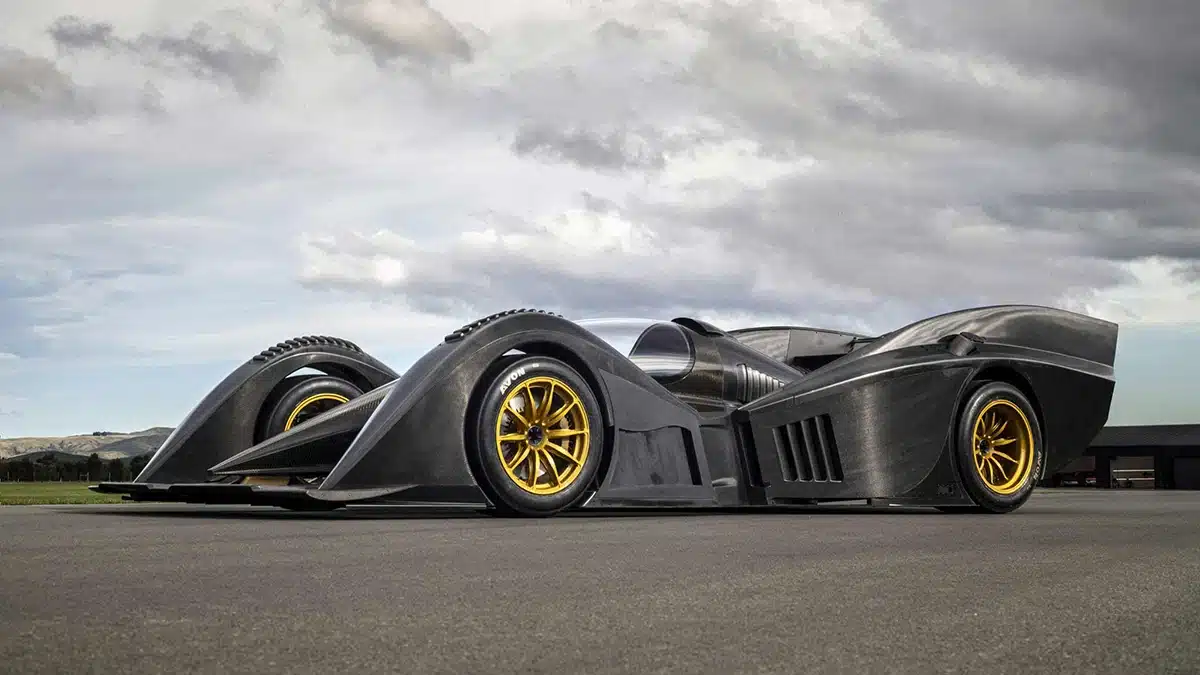The Skoda Yeti has been a loyal servant in reinventing the Czech brand, which for a long time was the whipping boy of the motoring world.
Much like the Nissan Juke – one of its rivals – this boxy compact SUV divided opinion when it first went on sale back in 2009, partly due to the multitude of right angles in its exterior styling, but also because small SUVs weren’t really a thing then and some just didn’t know what to make of it all.
Eight years and more than 580,000 sales later, the Yeti is making way for a completely new car – the Karoq – which will go on sale in the second half of 2017.
What exactly is the Karoq?
An all-new compact SUV that, apart from maybe a few nuts and bolts, will share nothing with the Yeti.
Much of its look and feel will be similar to that of the Kia Sorento-sized Kodiaq SUV.
These pictures are a bit weird – is that what it really looks like?
No, the car in these pictures is wrapped in camouflage to obscure its final appearance, ahead of its grand unveiling in Stockholm on Thursday May 18th.
What’s that name about?
Pronounced ‘kah-rock’, the name and spelling derives from the language of Alaska’s indigenous people – the Alutiiq tribe – and is a combination of the terms ‘kaa’raq’, meaning ‘car’, and ‘ruq’, meaning ‘arrow’.
If all this sounds familiar, Nissan adopted a similar approach in 2006 for the Qashqai, pinching the name from people living in mountainous Southwestern Iran.
The Karoq title continues the new naming approach started with the Kodiaq – Skoda’s larger SUV. All Skoda SUVs from here on in will have a name that begins with a ‘K’ and ends with a ‘Q’.
What’s under the bonnet?
Skoda has confirmed that the Karoq will boast a five engine line-up, comprising two petrol and three diesel units, with capacities including 1.0, 1.5, 1.6 and 2.0-litres. Power output will range between 113bhp to 187bhp.
The 187bhp 2.0 TDI diesel will come with all-wheel drive as standard, linked to a seven-speed DSG automatic gearbox.
A 1.5 TSI petrol unit – which debutted in the revised VW Golf – will be the first Skoda to feature the VW Group’s cylinder deactivation technology, which rests engine cylinders when they’re not required in the interest of saving fuel. Think of it like stop/start, but for part of the engine rather than the entire thing.
Any other tech worth knowing about?
Yes, the Karoq is built on the VW Group’s MQB platform, which provides the underpinnings for some of the group’s most popular cars, namely the VW Golf, Audi Q2 and A3, SEAT Leon and Ateca, as well as the Skoda Octavia, Superb and Kodiaq.
A whole host of driver assistance systems will be on board too, such as a parking assistant, lane assist and traffic-jam assistant. Things like blind spot detect, front assist with predictive pedestrian protection and emergency assistant will also boast the Karoq’s safety credentials.
Inside, a freely programmable digital instrument panel will be available for the first time in a Skoda, with the cockpit displays customisable to the driver’s individual wishes.
Additionally, the new LED ambient lighting in the decor strips of doors can be switched between ten colours, so drivers can create their own ideal atmosphere.
How big is it?
The Karoq measures 4,382mm in length, 1,841mm wide, and stands at 1,605mm high, with a 2,638mm wheelbase (2,630mm in the all-wheel version).
That makes its larger that the Yeti in every direction except height, and compared to the Nissan Juke, those measurements make the Karoq almost 25cm longer, 7.6cm wider and barely half a centimetre taller.
In a normal situation, it has 521 litres of boot space, but with the optional VarioFlex rear seat, boot capacity is variable, holding between 479 and 588 litres.
With the back seats folded down, boot space expands to 1,630 litres, but the rear seats can be removed completely to create a van-like load space, capable of storing 1,810 litres.
How much will it cost?
Prices are expected to start from around £16,000 but that’s just a prediction, we won’t know for sure until much closer to the car’s arrival in showrooms.
When can I have one?
Skoda is saying the car will go on sale some time in the second half of 2017 but that could just refer to ordering.
Initial customers are more likely to have a Karoq sitting on their driveway from early 2018.
What do you think of the new replacement to the Yeti? Will be as big a hit as its groundbreaking predecessor? What do you think of the Karoq name? Tell us down there in the comments section…
For more articles like this, receive our weekly e-newsletter, including partner deals and all things motoring, register your email below.
Please note: You cannot subscribe to Smart-Motoring unless you put a tick in the checkbox below to indicate have read and agreed to our privacy policy.








